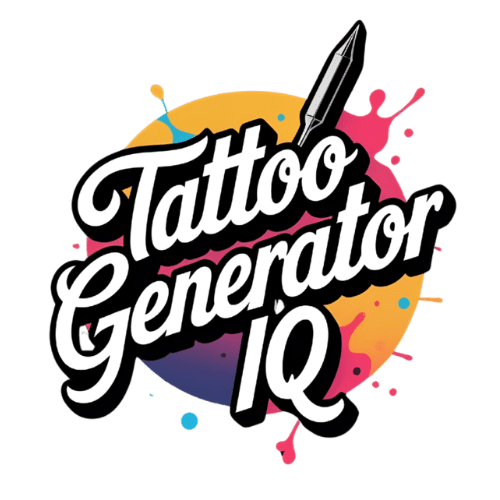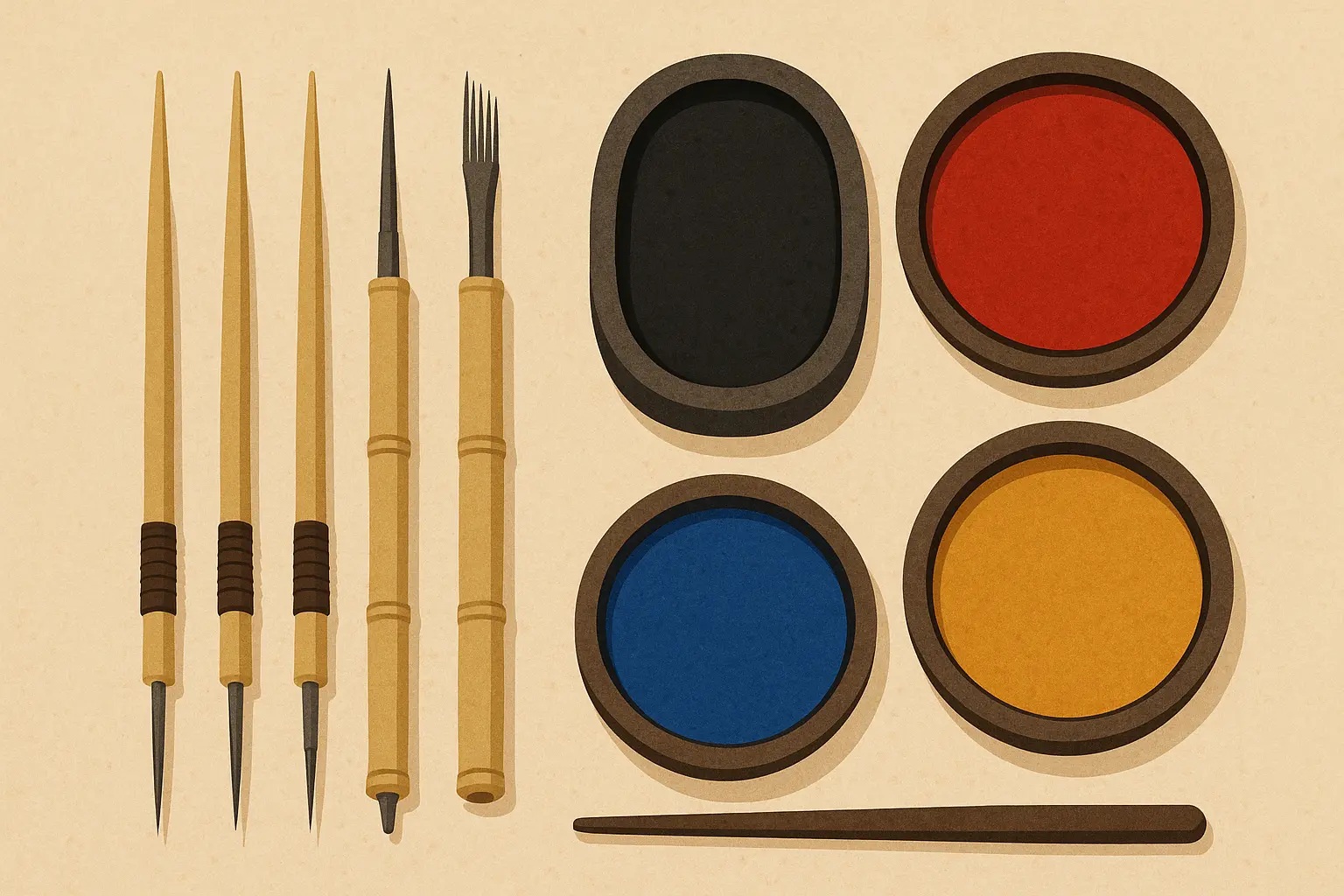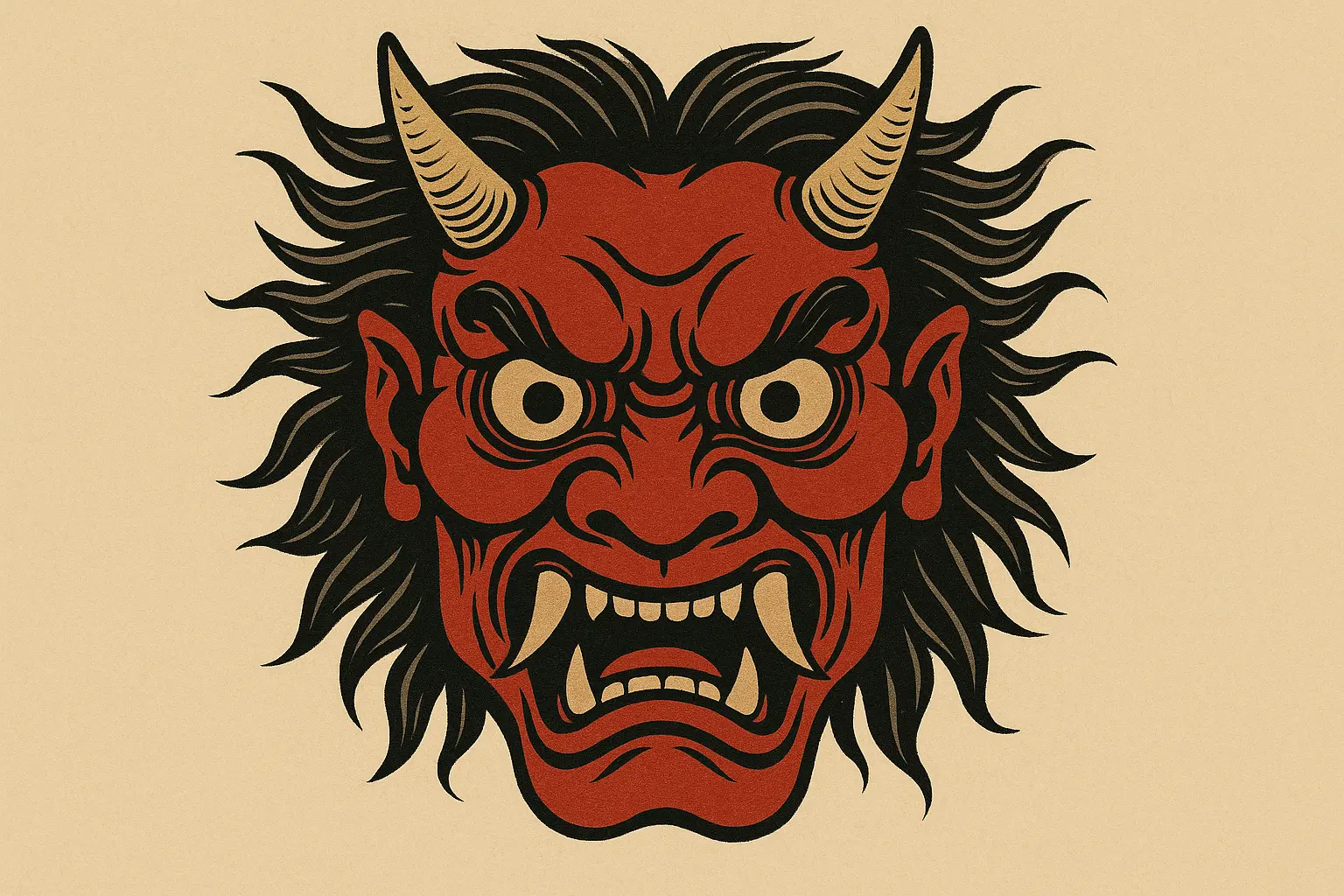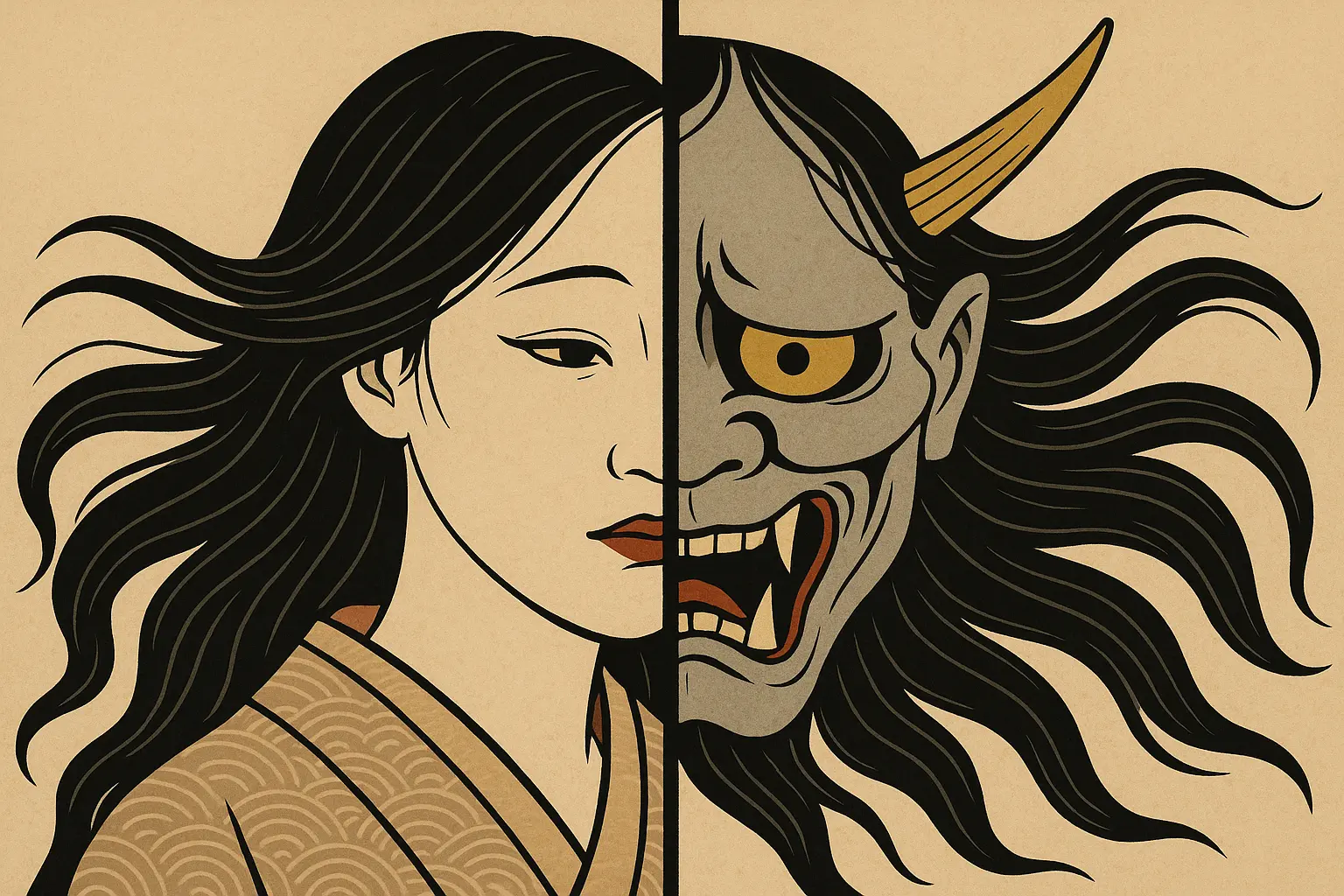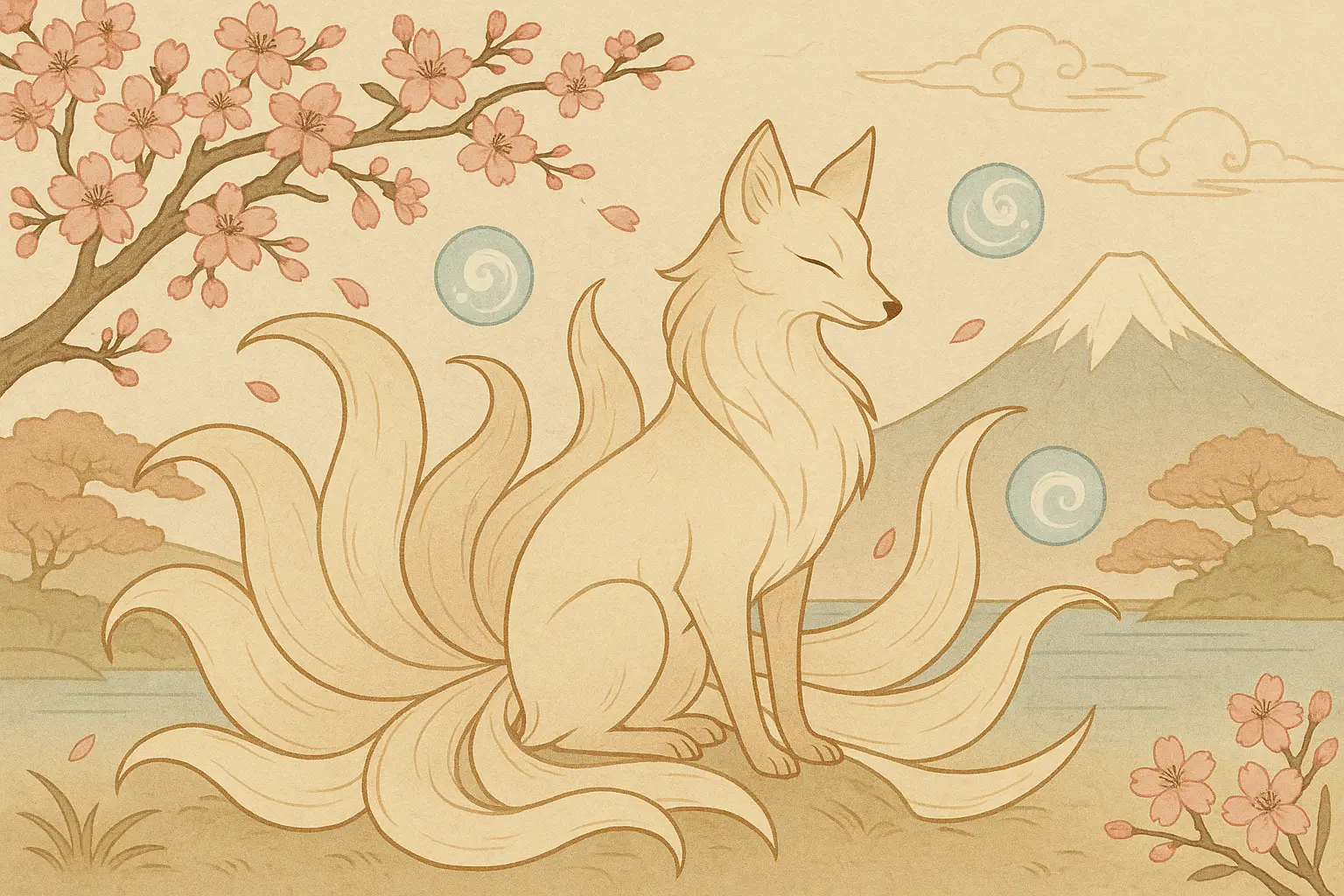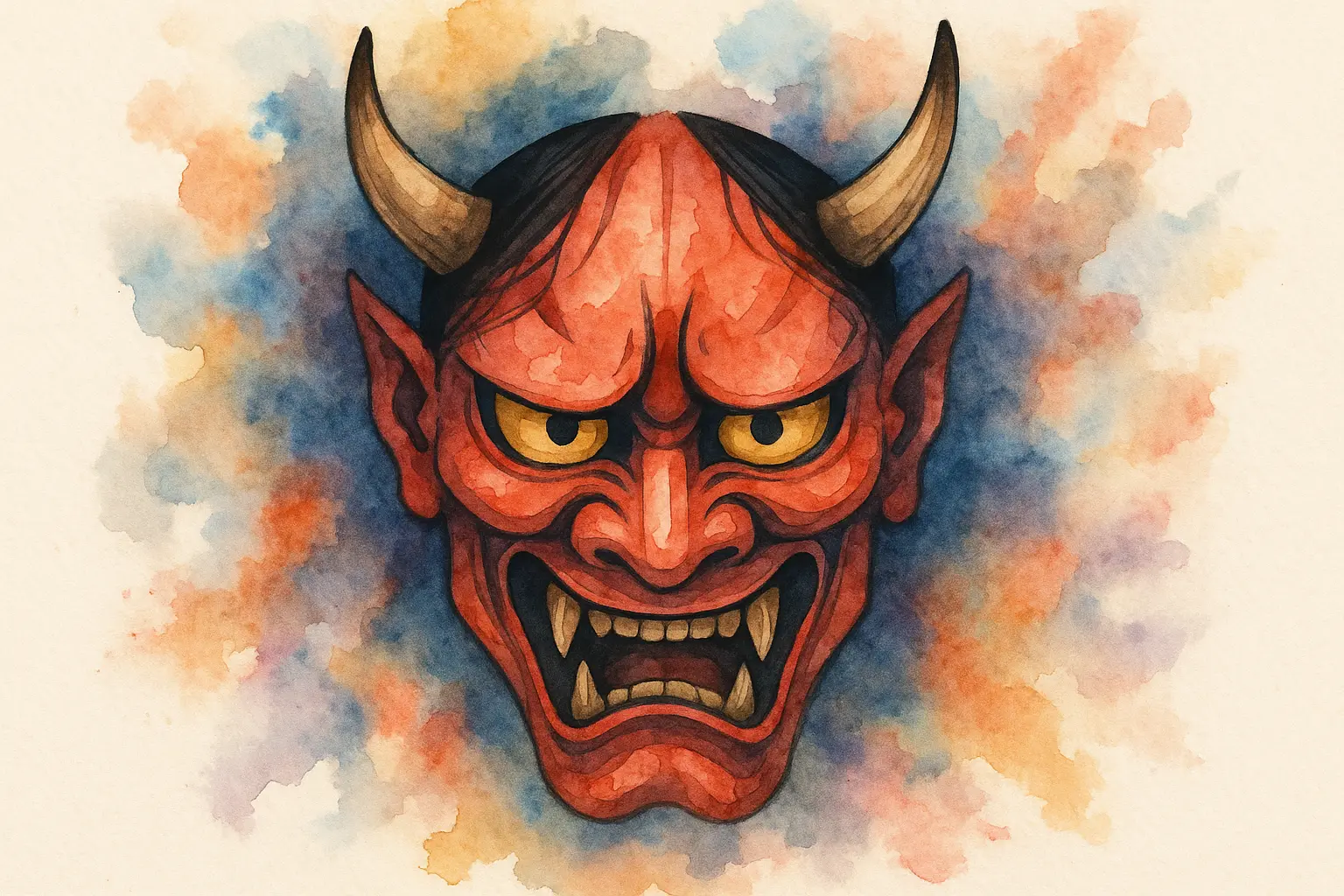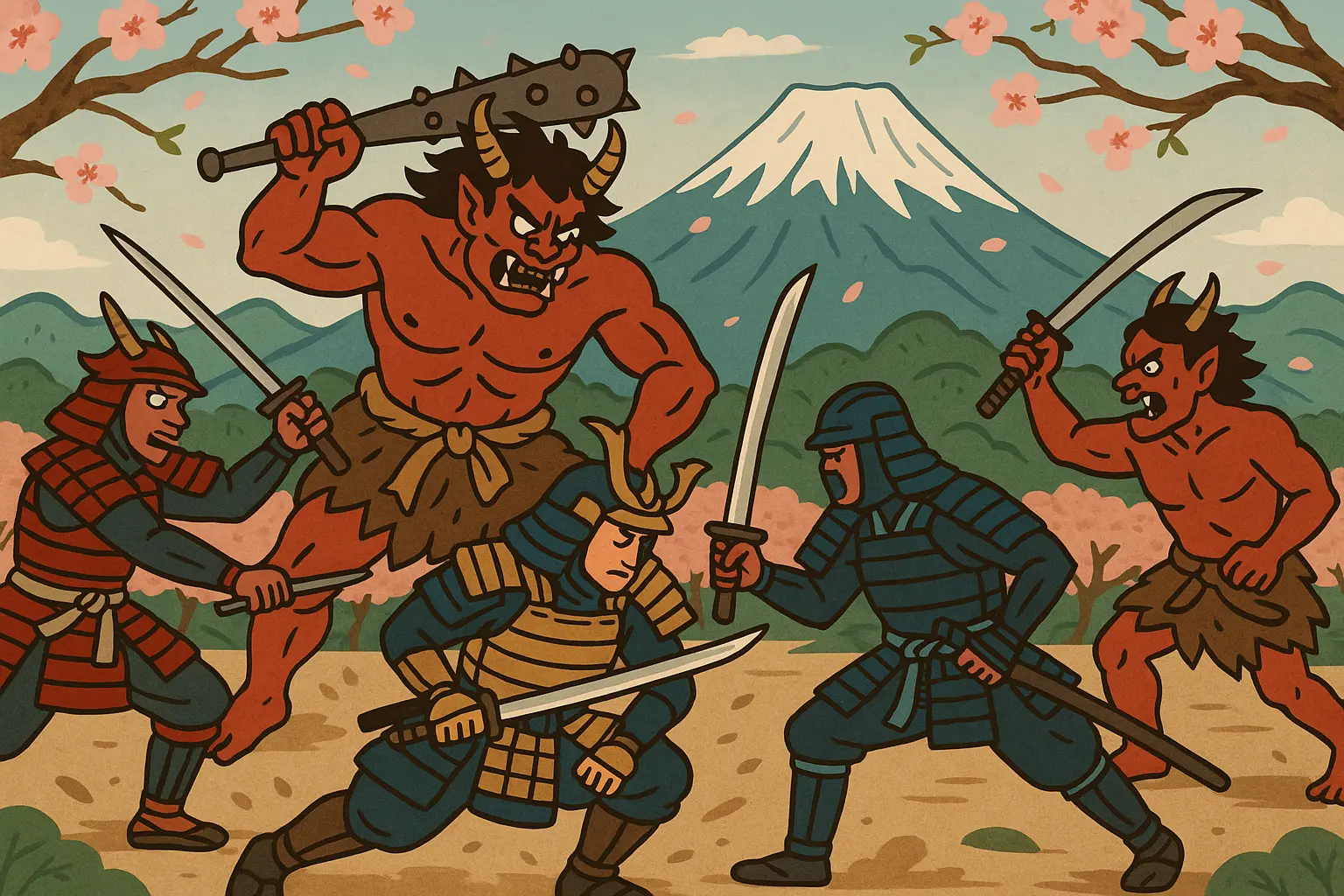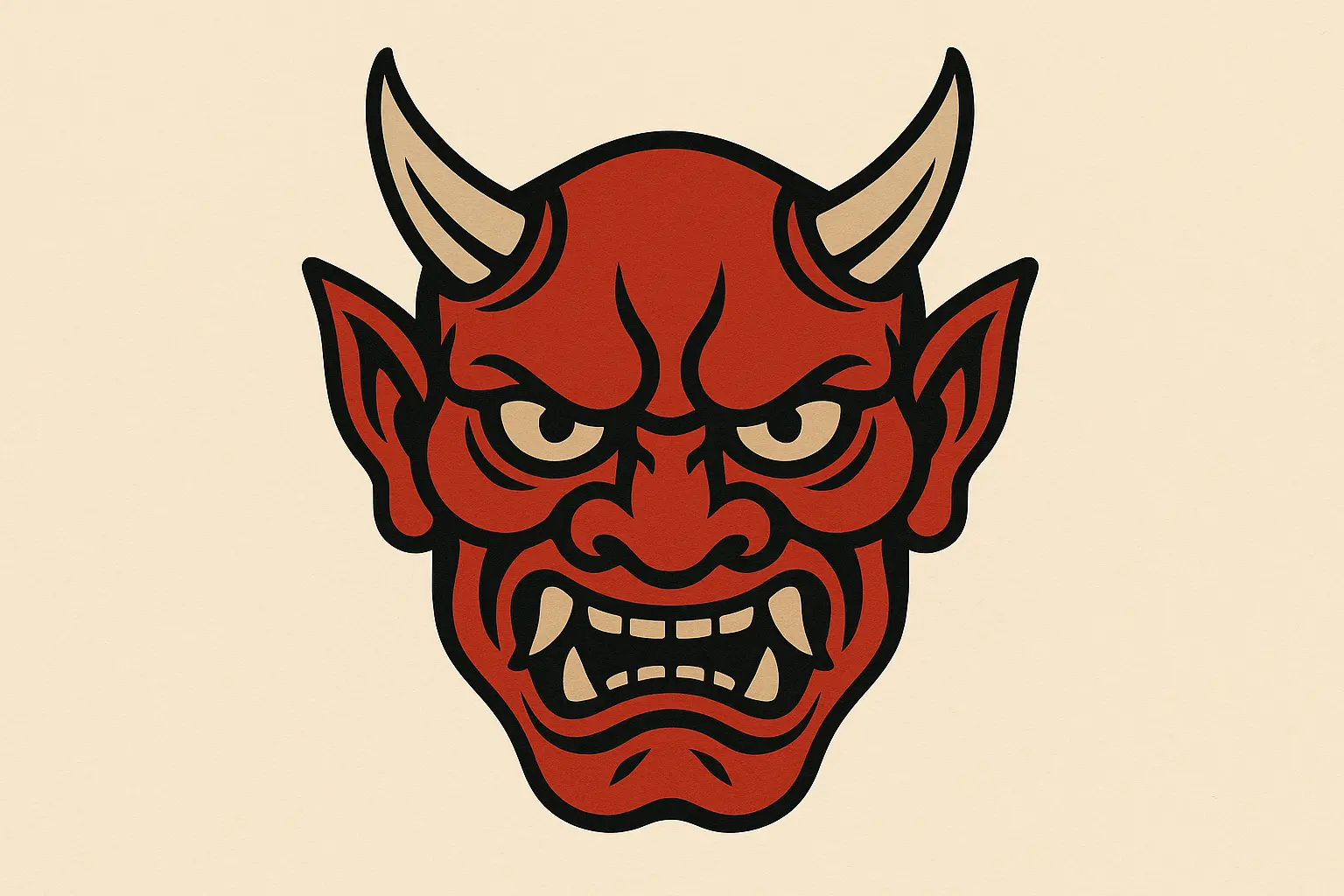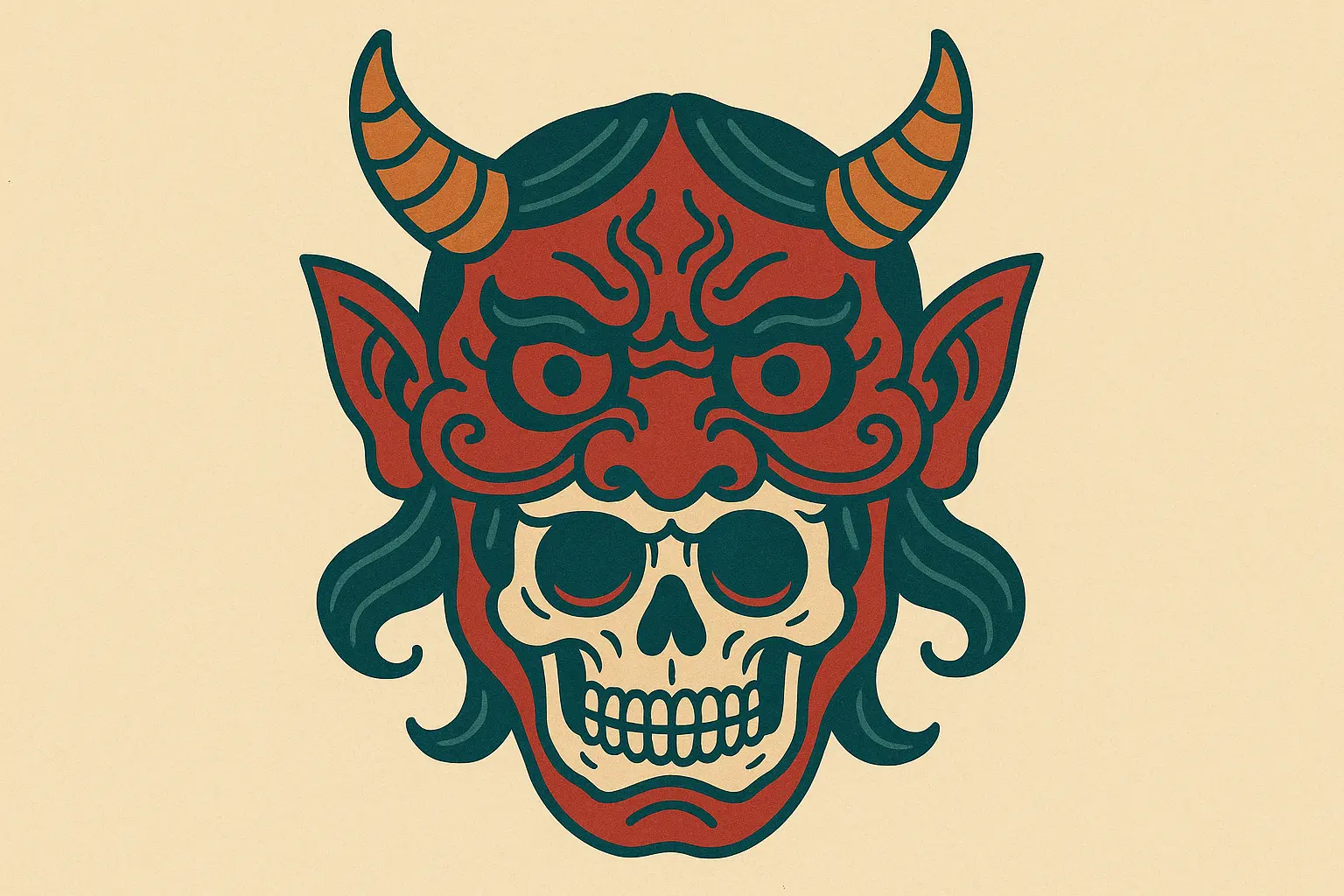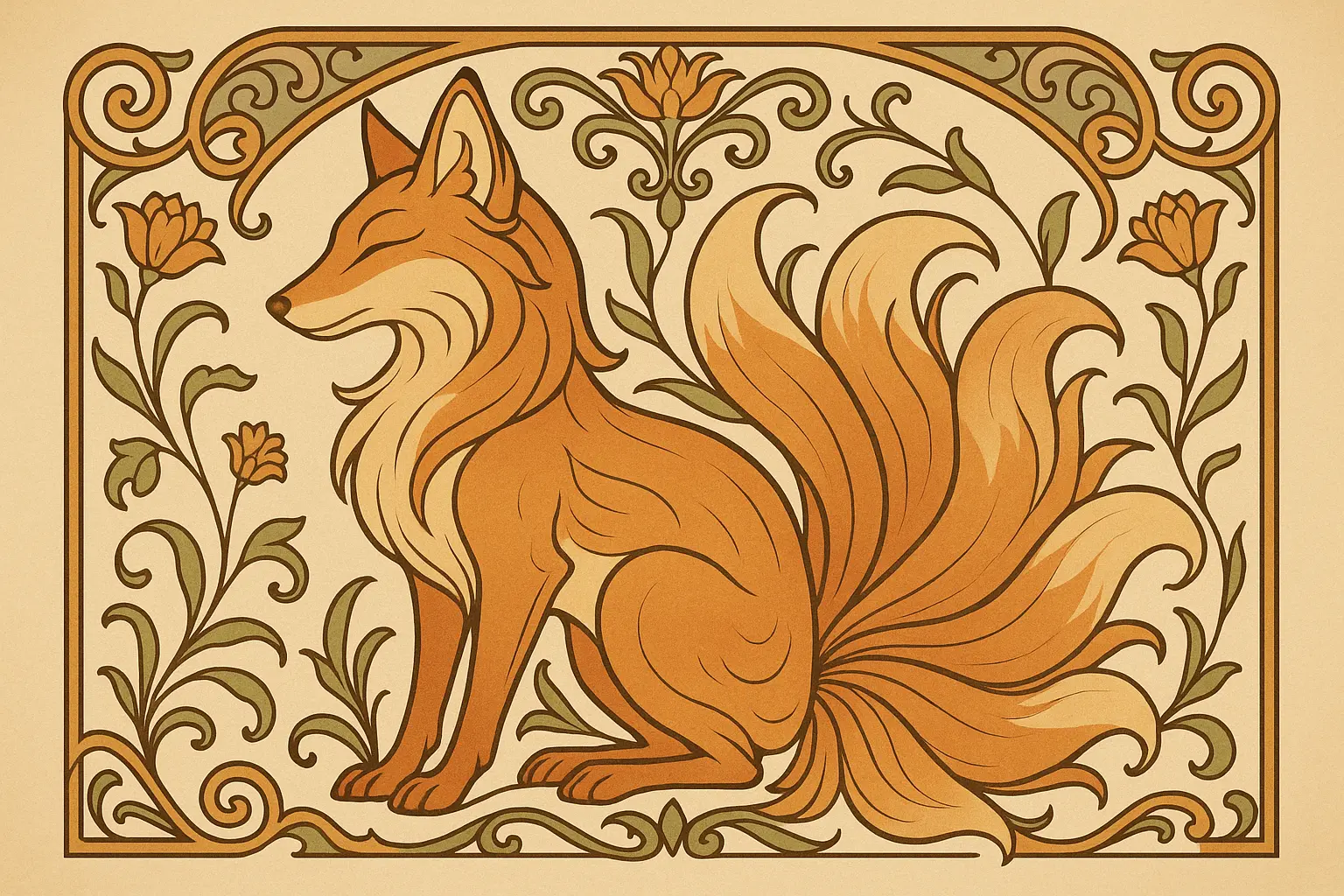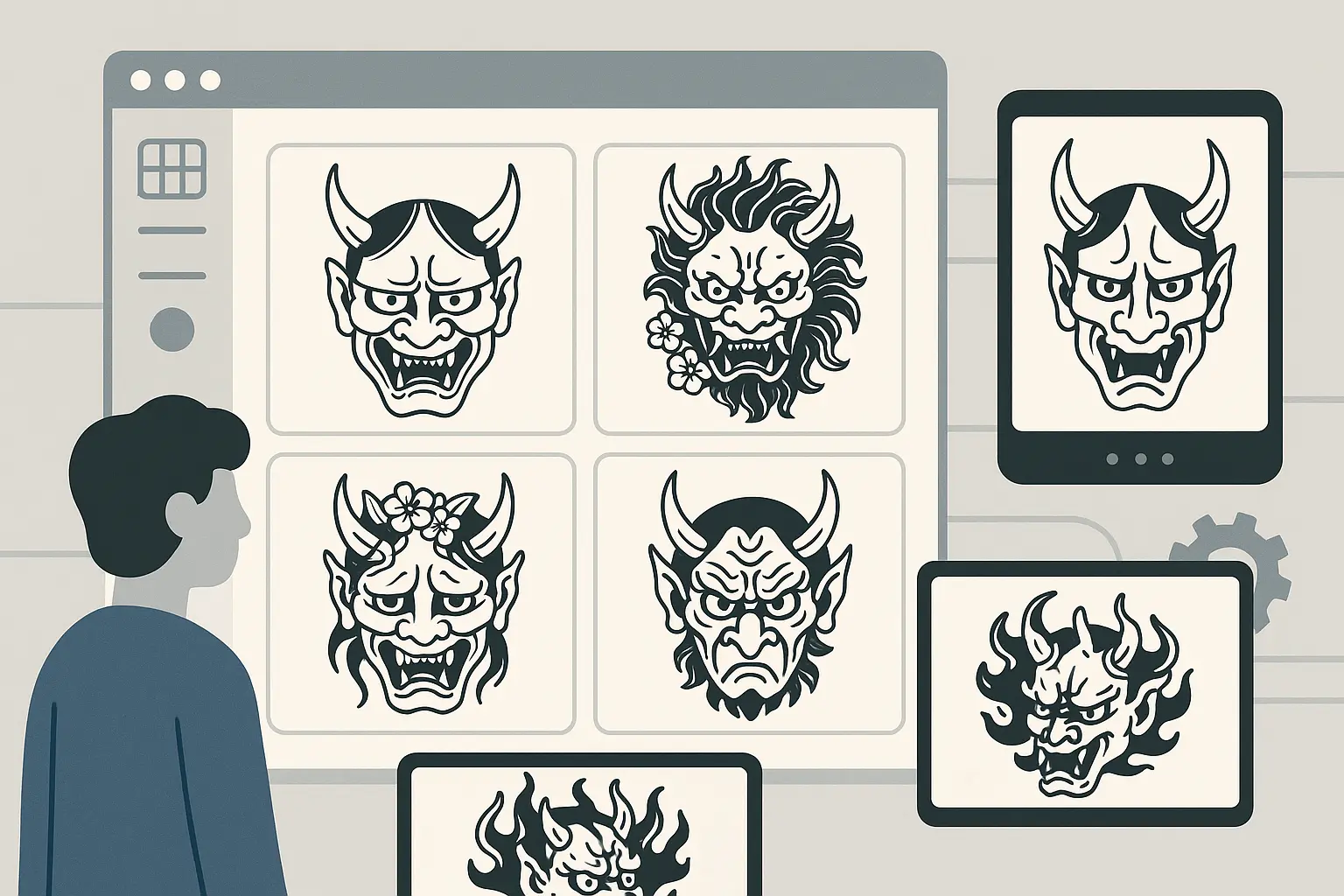25 Japanese Demon Tattoos That Actually Mean Something
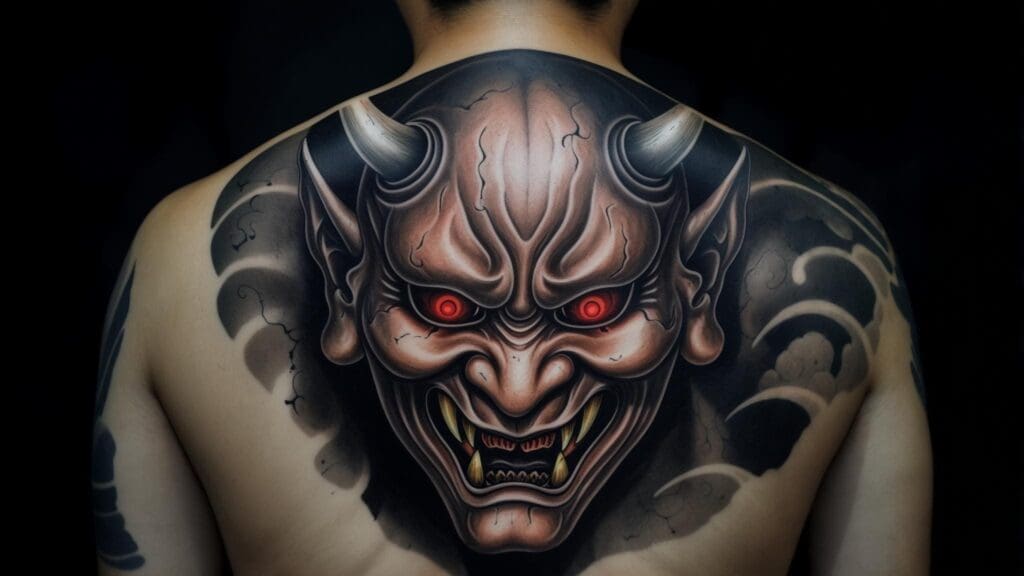
I’ll be honest – when I first walked into a tattoo shop asking about Japanese demons, I had no idea what I was getting into. The artist started throwing around terms like “oni” and “yokai,” and I just nodded along like I knew what he was talking about. Spoiler alert: I didn’t.
That embarrassing moment sent me down a rabbit hole of research that completely changed how I think about these tattoos. Turns out, there’s a whole world of meaning behind those fierce red faces and fox spirits that goes way deeper than “looks cool.”
Japanese demon tattoos have exploded in popularity lately – according to The Hangout Tattoo Studio, traditional oni and yokai designs make up over 40% of all Japanese-style tattoos people ask for. But here’s what most people don’t realize: these aren’t just striking visual pieces. They’re spiritual guardians, protective talismans, and symbols of personal transformation that have been helping people through tough times for centuries.
Whether you’re drawn to the fierce strength of traditional oni or the mystical wisdom of yokai spirits, choosing the right japanese demon tattoo isn’t just about what looks cool on Instagram. It’s about understanding what these symbols actually mean and finding one that connects with your personal story.
Table of Contents
-
Hold Up – Read This Before You Do Anything
-
Traditional Oni Designs (Designs 1-5)
-
Yokai Spirits (Designs 6-9)
-
Modern Takes That Don’t Suck (Designs 10-13)
-
Go Big or Go Home: Sleeve and Large Scale Designs (Designs 14-17)
-
Small and Sneaky Options (Designs 18-21)
-
Cultural Fusion Designs (Designs 22-25)
-
Let’s Be Real About What Actually Works
-
How Tattoo Generator IQ Can Help (If You’re Into That)
-
The Bottom Line
TL;DR
-
Japanese demon tattoos aren’t just pretty pictures – they carry serious cultural weight and personal meaning
-
Traditional oni designs pack the most authentic cultural punch but require skilled artists and bold commitment
-
Yokai spirits like kitsune and tengu offer mystical symbolism with flowing designs that age like fine wine
-
Modern interpretations let you blend old-school meaning with contemporary style (when done right)
-
Big pieces tell epic stories but cost serious money and time – small pieces keep it simple and professional-friendly
-
Cultural fusion can work but requires careful balance to avoid looking like a hot mess
-
Simple, bold designs age the best while complex color work needs regular touch-ups
-
Pick an artist who actually knows Japanese techniques, not just someone who Googled “oni tattoo”
-
Your demon choice should reflect what you want to embody or overcome, not just what looks badass
Hold Up – Read This Before You Do Anything
Before you fall in love with some japanese demon tattoo design on Pinterest, let’s talk about the five things that’ll make or break your decision. I’m talking about cultural respect (so you don’t end up with something offensive), placement strategy (because size matters), finding the right artist (spoiler: not all tattoo artists are created equal), choosing between traditional and modern styles, and making sure this thing actually means something to you personally.
Here’s the thing that trips up most people: cultural respect isn’t just about being politically correct. Traditional demons (yokai and oni) aren’t Halloween decorations – they’re spiritual beings with deep meanings in Japanese folklore. You need to actually understand what your chosen demon represents before you permanently ink it on your body. I’ve seen too many people get buyer’s remorse when they finally learn their “cool demon” actually represents something that doesn’t align with their values.
|
What You’re Deciding |
Traditional Route |
Modern Route |
Real Talk |
|---|---|---|---|
|
Cultural Respect |
Stick to historical designs exactly |
Respectful interpretation with your twist |
High respect vs. personal expression |
|
Colors |
Bold reds, blues, gold accents |
Whatever works for you, including black/gray |
Traditional pop vs. modern flexibility |
|
Size |
Medium to large (6+ inches minimum) |
Can work small to large |
Detail vs. placement options |
|
Artist Skills |
Must know Japanese techniques |
Good general skills with cultural awareness |
Authentic execution vs. finding someone available |
|
Upkeep |
Regular color touch-ups needed |
Minimal maintenance |
Long-term investment vs. set-it-and-forget-it |
Now let’s talk technical stuff without getting too nerdy. Japanese demon tattoo design concepts need artists who understand specific techniques – proper line weight, traditional color mixing, and how these designs flow with your body’s natural curves. If your artist doesn’t know the difference between tebori shading and regular machine work, you might want to keep looking.
Here’s the reality about size and placement: demon tattoos need room to breathe. Cram an oni face into a tiny space and you’ll lose all those details that make it actually look scary (and meaningful). These designs traditionally work best bigger because of all the intricate details. Plus, if you’re planning to build a Japanese-themed sleeve later, you want to make sure everything flows together.
The color versus black and gray decision affects way more than just the initial look. Traditional japanese demon tattoo designs pop with those bold reds, deep blues, and gold accents – that’s part of their authentic appeal. But color work fades differently, costs more to maintain, and some workplaces aren’t cool with bright red demons on your forearms. Black and gray gives you a more subtle approach that ages better, but you lose some of that traditional punch.
Most importantly, your demon needs to mean something to YOU. Japanese demons each represent different things – protection, strength, transformation, spiritual growth. Don’t just pick the one that looks coolest. Pick the one that represents something you want in your life or something you’re trying to overcome. Trust me, you’ll be explaining this tattoo to people for years, so you better have a good story.
Traditional Oni Designs
Traditional oni designs are the real deal – the most culturally authentic japanese demon tattoos you can get. We’re talking about those classic red and blue-skinned demons with the bulging eyes, massive fangs, and wild hair that looks like they stuck their finger in an electrical socket. These five designs are straight from centuries of Japanese art, featuring bold colors, expressions that could scare a ghost, and protective symbolism that’s been keeping people safe since way before your great-great-grandparents were born.
1. Classic Red Oni Face
You know that classic angry red demon face you’ve seen everywhere? That’s a red oni, and there’s actually a reason it looks so pissed off. These guys are supposed to scare away bad spirits – think of them as your personal supernatural bodyguard. The red oni represents passionate strength and the power to bulldoze through whatever life throws at you.
This japanese demon tattoo design works best as a medium to large piece (6-10 inches), and it’s perfect for shoulders, upper arms, or as part of a chest piece. Fair warning: that bold red coloring needs an artist who knows what they’re doing with color saturation. Red ink can be tricky – it needs to be built up in layers and properly healed, or it’ll look washed out in a few years.
Sarah, a martial arts instructor, got a classic red oni on her shoulder after doing her homework on the protective symbolism. She found an artist who specialized in Japanese work and used traditional tebori techniques mixed with modern equipment. The 8-inch design took three sessions (and probably cost more than her monthly rent), but two years later, that red is still popping. Sarah swears the tattoo gives her confidence during competitions – and honestly, who’s going to argue with someone sporting a fierce demon on their shoulder?
2. Blue Oni Guardian
The blue oni is the red oni’s calmer cousin – still fierce as hell, but with more of a “wise protector” vibe than “I’m going to eat your face” energy. Blue oni represent controlled strength and protective wisdom. These designs often include extra elements like prayer beads, temple backgrounds, or other protective symbols that make the whole piece more complex.
Blue oni serve as temple guardians in Japanese culture, so they’re all about that controlled power. The blue coloring creates a more subdued look compared to red oni, but it’s equally powerful. Here’s the catch with blue ink – you need quality pigments or it’ll fade to a muddy gray that looks more sad than scary. This works best on larger areas where the color can really shine.
3. Hannya Mask Portrait
The hannya is where things get emotionally complicated. This isn’t just any demon – it’s a woman who got so consumed by jealousy and rage that she transformed into something terrifying. The hannya captures that tragic beauty and horrifying transformation with intricate facial details, flowing hair, and those characteristic horns and fangs that’ll give you nightmares.
This japanese demon tattoo design represents the duality of human nature and what happens when emotions take over. It’s beautiful and terrifying at the same time, which makes it incredibly powerful as body art. But here’s the thing – this requires an artist with serious portrait skills. The facial details need to be spot-on, or you’ll end up with something that looks more confused than fierce.
4. Oni with Tiger Combination
When you combine the strength of an oni with the ferocity of a tiger, you get the ultimate “don’t mess with me” tattoo. This design creates incredible movement and energy – it’s like capturing a supernatural battle in progress. The interaction between demon and beast makes for compelling art that tells a story.
The symbolism here is double protection – you’ve got demonic power AND animal ferocity watching your back. But this is complex stuff that requires an artist who knows both anatomy and composition. You need someone who can make the interaction look natural rather than like they just slapped two separate tattoos together.
5. Minimalist Oni Silhouette
This is for people who want the protective symbolism without looking like they’re auditioning for a yakuza movie. Clean lines, simplified forms, but still unmistakably oni. It’s a modern take that appeals to people who like their symbolism subtle.
The great thing about minimalist designs is they age like fine wine. Simple lines and bold shapes stay crisp for decades with minimal touch-ups. Plus, you’ve got way more flexibility with sizing and placement – this could work anywhere from your wrist to your back.
Yokai Spirits
Yokai spirits are the mystical side of Japanese demons – think intelligent, magical creatures with supernatural abilities and backstories more complex than a Netflix series. These four designs showcase the brainy, spiritual demons: the nine-tailed kitsune fox (basically the Einstein of fox spirits), the martial arts master tengu, the water-dwelling kappa, and the messenger raven tengu. Each yokai brings unique symbolism about wisdom, spiritual growth, natural elements, and divine communication – plus they look incredible as flowing, dynamic tattoos.
6. Kitsune Nine-Tailed Fox
The kitsune is basically the overachiever of the spirit world. The more tails it has, the wiser and more powerful it gets, with nine tails being the PhD level of fox spirituality. This japanese demon tattoo design usually features flowing tails, mystical elements like floating orbs (called fox fire), and traditional Japanese landscape elements that make the whole piece look ethereal.
Kitsune represent intelligence, cunning, and magical ability – they’re the spirits you want on your side when you need to outsmart someone or tap into your own wisdom. The design requires flowing line work that can wrap around your limbs or flow across larger areas. Those multiple tails give artists a lot to work with compositionally.
Marcus, a philosophy professor, went with a kitsune design after connecting with its symbolism of wisdom and spiritual growth. His artist created this flowing composition where the nine tails wrapped around his forearm, with each tail representing a different area of knowledge he’d gained through his academic journey. They even incorporated subtle geometric patterns within the tails, blending traditional symbolism with his love for mathematical concepts. Now when students ask about it, Marcus uses it as a teaching moment about lifelong learning – pretty cool way to turn body art into education.
7. Tengu Warrior
Tengu are the martial arts masters of the spirit world – part human, part bird, all badass. They’re known for their incredible fighting skills and mountain wisdom. This design features that characteristic long nose (or sometimes a full bird beak), feathered elements, and often includes weapons or martial arts poses that show off their combat expertise.
These spirits represent martial arts mastery and spiritual power that comes from mountain training (think Mr. Miyagi, but with wings and way more intimidating). The design requires understanding of both human and bird anatomy, plus detailed weapon work if you’re including traditional Japanese weapons. Those feathers need expert texturing to look realistic.
8. Kappa Water Demon
Kappa are the mischievous water spirits with that distinctive bowl-shaped head and turtle-like shell. They’re known for being both troublemakers and protectors of water sources – kind of like that friend who’ll prank you but also have your back when things get serious. This design features aquatic elements like waves or water plants that make the whole piece flow.
Kappa symbolize respect for natural water sources and environmental protection. They’re also associated with strength (they’re supposed to be incredibly strong despite their small size) and the importance of keeping promises. The design works great with flowing water elements that age gracefully and can integrate well with larger water-themed compositions.
9. Raven Tengu (Karasu)
Raven tengu are the full-bird version of tengu, serving as messengers between the human and spirit worlds. These designs emphasize dark feathers, intelligent eyes that seem to see right through you, and often include scrolls or message elements that reference their communication role.
As spiritual messengers and guardians of sacred knowledge, raven tengu represent wisdom, communication, and the connection between different realms. The design requires detailed feather work and the ability to capture that intelligent expression that makes ravens so compelling. Dark elements maintain contrast well over time, and those wing spans can utilize larger body areas effectively.
Modern Takes That Don’t Suck
Modern interpretations are where traditional Japanese demon symbolism meets contemporary artistic techniques. These four designs show you can respect cultural heritage while appealing to current aesthetic preferences without looking like you’re trying too hard to be trendy. We’re talking geometric patterns, watercolor effects, minimalist line art, and neo-traditional styling that updates ancient symbols for modern expression while keeping the spiritual significance intact.
|
Style |
What Stays Traditional |
What Gets Updated |
Best Spots |
How It Ages |
|---|---|---|---|---|
|
Geometric Oni |
Fierce expression, protective meaning |
Angular shapes, precise lines |
Forearm, shoulder |
Lines stay crisp forever |
|
Watercolor Hannya |
Emotional transformation, mask features |
Soft color bleeds, painterly effects |
Upper arm, thigh |
Natural softening actually looks better |
|
Minimalist Kitsune |
Spiritual wisdom, fox shape |
Single-line technique, bare essentials |
Wrist, ankle, behind ear |
Simple = timeless |
|
Neo-Traditional |
Cultural authenticity, spiritual meaning |
Enhanced colors, modern shading |
Works anywhere |
Better than old-school techniques |
10. Geometric Oni Face
This approach takes traditional oni features and rebuilds them using modern geometric patterns. You get angular shapes and precise lines that construct the demon’s features in a way that feels both ancient and futuristic. It’s like someone fed traditional Japanese art through a computer and got something that honors the original while speaking to modern aesthetics.
The protective symbolism stays intact – you’re still getting that supernatural bodyguard energy – but through a contemporary artistic lens. This requires an artist with serious geometric precision and pattern integration skills. The beauty of geometric elements is they age incredibly well with those clean lines, and the design scales nicely whether you want it small and discrete or large and bold.
11. Watercolor Hannya
This artistic interpretation uses watercolor techniques to create flowing, painterly effects around the traditional hannya mask. The soft color bleeds create this beautiful contrast with the sharp, fierce features of the mask – it’s like capturing the emotional turmoil that creates the transformation in the first place.
The emotional transformation aspect gets represented through the artistic technique itself, which is pretty clever when you think about it. This requires an artist skilled in watercolor tattoo techniques and color blending. Here’s the cool part: as watercolor effects naturally soften over time, they actually enhance the artistic appeal rather than detract from it.
12. Minimalist Line Art Kitsune
This approach strips the kitsune down to its absolute essentials using single-line techniques. You get the spiritual wisdom and fox spirit symbolism without all the complexity of traditional full-color work. It’s perfect for people who want the meaning without the visual noise.
The genius of this approach is that confident line work and clean proportions create something that maintains clarity forever. No color to fade, no complex details to blur – just pure, essential design that works whether it’s tiny on your wrist or larger on your shoulder.
13. Neo-Traditional Oni
Neo-traditional combines the best of both worlds – traditional Japanese demon imagery with contemporary tattoo techniques. You get enhanced color saturation, modern shading methods, and updated artistic elements while keeping the cultural authenticity intact. It’s like getting the original recipe but with better ingredients and cooking techniques.
This style often improves on traditional longevity through better ink quality and application techniques. You get that traditional protective power updated for contemporary expression, and it’s versatile enough to work across various placement preferences.
Go Big or Go Home: Sleeve and Large Scale Designs
Large-scale japanese demon tattoo designs are where you get to tell epic stories across substantial body real estate. These four designs are for people ready to make a serious commitment – we’re talking full sleeves, back pieces, and leg compositions that require multiple sessions, serious money, and the pain tolerance of a medieval warrior. But the payoff? Incredible storytelling through comprehensive compositions that’ll have people stopping you on the street to get a closer look.
14. Full Sleeve Oni Battle Scene
This is storytelling at its finest – epic battles between oni and samurai or other mythical beings that wrap around your entire arm. The composition includes background elements like mountains, clouds, and cherry blossoms that create depth and context. It’s like wearing a piece of Japanese art history.
Epic storytelling represents the eternal struggle between order and chaos, good and evil, human and supernatural. This requires an artist who understands complex composition, narrative flow, and how to make multiple characters interact believably. Fair warning: this is a full arm commitment that’ll take months to complete and cost more than a decent used car.
David, a military veteran, commissioned a full sleeve that tells his personal battle with PTSD through oni versus samurai imagery. The design starts at his shoulder with chaotic demon imagery representing his struggles, then transitions down his arm to show the gradual triumph of the disciplined samurai warrior. Traditional elements like waves and wind patterns flow throughout, representing the ongoing nature of his healing journey. It took 18 months and probably cost more than his motorcycle, but David says explaining the symbolism to people has become part of his therapeutic process.
15. Back Piece Dragon-Oni Fusion
This large-scale design combines dragon and oni elements into one powerful hybrid creature that spans your entire back. The composition uses every inch of canvas to show the creature in dynamic motion with traditional background elements. It’s the ultimate power fantasy made flesh.
This represents ultimate power – mastery over multiple spiritual realms. You need an artist who can handle large-scale composition, hybrid anatomy, and dynamic movement that makes sense across the entire back. This is a years-long commitment that requires serious pain tolerance and deep pockets, but the result is museum-quality body art.
16. Leg Sleeve Yokai Parade
Multiple yokai spirits in a procession format, wrapping around your leg from thigh to ankle. Each spirit maintains its individual character while contributing to the overall narrative flow. It’s like having a supernatural parade permanently marching up your leg.
This represents protection from multiple spiritual entities – you’re basically assembling your own personal supernatural army. The design requires consistent style across multiple characters and narrative flow that makes sense as people’s eyes follow it around your leg. The cool thing about leg placement is it ages independently while maintaining overall appeal.
17. Chest Panel Hannya Transformation
This large chest piece shows the actual transformation process from human to hannya demon using artistic techniques to show the progression across your chest. It often includes emotional elements like tears, broken hearts, or transformation symbols that tell the complete story.
Personal transformation and emotional evolution get depicted through progressive imagery that’s incredibly powerful and personal. Chest placement provides a stable canvas for long-term appearance, and the horizontal flow works perfectly for transformation narratives.
Small and Sneaky Options
Small japanese demon tattoo designs pack powerful symbolism into compact formats perfect for people who need to keep things professional or just prefer subtle body art. These four designs compress essential demon characteristics into discrete sizes while keeping the cultural authenticity and spiritual significance intact. Each focuses on the most recognizable features using clean lines and bold elements that age like fine wine.
18. Tiny Oni Mask
A small but detailed oni mask that focuses on the most recognizable fierce characteristics in a compact format. You get personal protection in a discrete package that works for people who need to keep tattoos hidden at work but still want that supernatural bodyguard energy.
This requires an artist who can compress detail without losing the essential features that make an oni recognizable. Simple, bold elements maintain clarity at small sizes, and you’ve got flexible placement options – wrist, ankle, behind the ear, wherever you can keep it professional when needed.
19. Minimalist Kitsune Silhouette
A simple outline of a kitsune with one to three tails that creates an elegant, understated representation of fox spirit wisdom. This works perfectly for people who want Japanese spiritual symbolism without the bold visual impact that might not fit their lifestyle.
Wisdom and cunning get expressed through subtle representation that requires clean line work and perfect proportions. Simple silhouettes age exceptionally well, and the small size allows for creative placement options that can be easily hidden or shown off depending on the situation.
20. Single Hannya Horn
An artistic interpretation showing just one horn of the hannya mask. It creates intrigue and allows for personal interpretation while maintaining that connection to the traditional symbol. It’s like a secret code that only people in the know will recognize.
This represents partial transformation or controlled emotional power – the idea that you’ve got that fierce energy available when needed but under control most of the time. Simple elements maintain clarity over decades, and the unique horn shape works well on curved body areas.
21. Micro Tengu Feather
A single feather design that references tengu without depicting the full creature. It’s perfect for people wanting a subtle connection to tengu symbolism of martial arts and mountain wisdom without broadcasting it to the world.
The martial arts connection and spiritual elevation get represented through symbolic reference rather than obvious imagery. This requires detailed feather work and texture representation at a small scale. The natural feather shape complements body curves beautifully.
Cultural Fusion Designs
Cultural fusion designs blend traditional japanese demon tattoo imagery with Western or contemporary elements. These four designs show how to create unique cross-cultural representations that respect Japanese heritage while incorporating other aesthetic influences. We’re talking oni-skull hybrids, steampunk tengu, cyberpunk hannya, and Art Nouveau kitsune – each requiring careful balance to avoid cultural appropriation while creating meaningful personal expression.
22. Oni-Skull Hybrid
This design combines traditional Japanese oni features with Western skull imagery, creating a cross-cultural representation that speaks to people with diverse aesthetic preferences while maintaining spiritual significance. It’s like building a bridge between Eastern and Western concepts of supernatural protection.
You get cross-cultural protection symbolism through artistic fusion that requires cultural fusion skills, anatomical accuracy from both traditions, and artistic balance that doesn’t favor one culture over the other. Bold elements from both cultures age well together, and the hybrid nature allows for various artistic interpretations and sizing options.
23. Steampunk Tengu
A Victorian-industrial interpretation featuring mechanical elements, gears, and steampunk accessories while maintaining the essential bird-warrior characteristics. It’s traditional wisdom adapted for the modern technological world – like what tengu might look like if they evolved alongside industrial revolution.
This represents traditional wisdom adapted for our modern technological world, requiring mechanical detail work, cultural fusion skills, and traditional accuracy. Mechanical elements create interesting aging characteristics, and complex details work best on larger placement areas where everything can be properly appreciated.
24. Cyberpunk Hannya
A futuristic interpretation featuring digital elements, circuit patterns, or cybernetic enhancements while maintaining the emotional intensity of the traditional hannya mask. It’s emotional transformation in the digital age – what happens when ancient rage meets modern technology.
This represents emotional transformation in our digital age through technological integration that requires digital element rendering, traditional mask accuracy, and futuristic aesthetics. Circuit patterns create interesting long-term visual development, and technical elements work well on areas that can showcase the detail work.
25. Art Nouveau Kitsune
This design incorporates Art Nouveau styling with flowing organic lines, decorative borders, and period-appropriate artistic elements while featuring the traditional kitsune form. Natural wisdom gets expressed through one of history’s most beautiful artistic movements.
This requires Art Nouveau styling knowledge, organic line work, and decorative elements that complement rather than compete with the kitsune. Flowing Art Nouveau elements age gracefully over time, and the decorative elements can frame and enhance natural body contours beautifully.
Let’s Be Real About What Actually Works
Different japanese demon tattoo styles perform differently when it comes to cultural authenticity, technical difficulty, how they age, lifestyle compatibility, and personal meaning. Traditional designs score highest for cultural respect while modern interpretations balance authenticity with contemporary appeal. Large-scale pieces demand serious skill and commitment but provide dramatic results, while simple designs are the tortoise in this race – they age most gracefully.
|
Design Type |
Cultural Authenticity |
How Hard to Execute |
Aging Game |
Lifestyle Friendly |
Personal Meaning Depth |
|---|---|---|---|---|---|
|
Traditional Oni |
9/10 |
High |
Good with upkeep |
Medium |
Very High |
|
Yokai Spirits |
8/10 |
Medium-High |
Excellent |
High |
High |
|
Modern Takes |
7/10 |
Medium |
Excellent |
Very High |
Medium-High |
|
Large Scale |
9/10 |
Very High |
Excellent |
Low-Medium |
Very High |
|
Small Discrete |
6/10 |
Low-Medium |
Excellent |
Very High |
Medium |
|
Cultural Fusion |
5/10 |
High |
Depends |
High |
Depends |
Cultural authenticity reality check: Traditional designs (Red Oni, Blue Oni , Hannya) score highest for cultural respect because they maintain historical accuracy and proper symbolic representation. Modern interpretations can balance respect with contemporary appeal when done thoughtfully, while fusion designs require extra careful execution to avoid looking like cultural appropriation.
Technical execution truth: Large-scale designs demand the highest skill levels and longest execution times, but they provide the most dramatic results. Small discrete options require precision and detail compression skills that not every artist has. Traditional color work needs specialized knowledge of Japanese tattooing techniques – don’t let just anyone attempt this stuff.
Aging and maintenance real talk: Simple, bold designs age most gracefully with minimal maintenance. Complex color work will need periodic touch-ups – budget for this. Geometric and minimalist approaches provide the best long-term appearance stability. That intricate detail work that looks amazing fresh might get muddy over time without proper care.
Lifestyle compatibility check: Discrete options work best if you need to keep things professional. Large-scale pieces are for people comfortable with visible body art and the attention it brings. Cultural fusion designs appeal to people with diverse aesthetic interests but can be harder to explain.
Personal meaning matters most: Traditional designs offer the deepest cultural symbolism and spiritual connection. Modern interpretations allow for personal artistic expression while maintaining spiritual significance. The choice should reflect your actual connection to Japanese culture and your personal spiritual journey – not just what looks cool on social media.
How Tattoo Generator IQ Can Help (If You’re Into That)
Look, I’m not here to sell you on anything, but if you’re feeling overwhelmed by all these choices, Tattoo Generator IQ’s AI platform can actually help you sort through the options. It’s designed specifically for culturally authentic Japanese designs, and it lets you experiment with different styles without commitment.
The platform offers 8+ traditional styles with custom blending that respects cultural heritage while allowing personal expression. The educational resources help you understand what different demons actually mean, so you don’t end up with something that doesn’t align with your values.
Real-time experimentation lets you visualize how traditional red oni designs look on different body parts, experiment with color versus black and gray options, test size variations to find optimal dimensions, and preview how modern interpretations maintain cultural authenticity while appealing to contemporary tastes.
Cultural education integration provides background on each demon’s folklore significance, guidance on respectful representation, traditional color palette explanations, and proper integration techniques for background elements.
Artist collaboration tools generate high-resolution references with proper proportions and cultural details, provide placement guides showing how designs flow with body anatomy, offer technical specifications for traditional techniques, and create artist-ready stencils that preserve cultural integrity.
If you’re ready to explore authentic Japanese demon designs that honor tradition while expressing your personal journey, it might be worth checking out.
The Bottom Line
Japanese demon tattoo designs represent way more than just striking visual art – they’re centuries of cultural wisdom, spiritual protection, and personal transformation rolled into permanent body art. Whether you go with a traditional red oni for passionate strength, a delicate hannya mask for emotional evolution, or a modern geometric interpretation that bridges cultures, your choice should reflect genuine connection to the symbolism and respect for the cultural heritage.
The 25 designs I’ve covered give you options for every aesthetic preference, placement consideration, and personal meaning you might be looking for. From bold full-sleeve battle scenes that tell epic stories to discrete minimalist symbols that whisper their wisdom, each approach provides authentic connection to Japanese spiritual tradition while working with modern lifestyle needs.
Here’s what you need to remember: Japanese demon tattoos traditionally serve as protective talismans and transformative symbols. Your chosen design becomes a daily reminder of the qualities you wish to embody – whether that’s the fierce protection of the oni, the wisdom of the tengu, the magical evolution of the kitsune, or the emotional honesty of the hannya. These powerful symbols have been guiding people through personal challenges for centuries.
The growing popularity of japanese demon tattoo designs reflects our collective need for spiritual protection and personal empowerment in modern times. These ancient symbols provide grounding and strength while connecting us to a rich cultural tradition that values honor, transformation, and the balance between human and spiritual realms.
When you’re ready to make your choice, prioritize authentic representation over whatever’s trending on Instagram. Find an artist who actually knows Japanese tattooing techniques (and don’t be afraid to ask to see their previous work). Make sure your design choice resonates with your personal journey rather than what you think will impress other people.
The most successful Japanese demon tattoos serve as lifelong companions in personal growth and spiritual development. They’re conversation starters, daily reminders of your values, and connections to something bigger than yourself. Just make sure you’re ready for the commitment – both financially and spiritually – because done right, these tattoos become part of who you are.
Take your time, do your research, and choose something that’ll still mean something to you in 20 years. Your future self will thank you for putting in the work upfront rather than rushing into something you’ll regret later.
